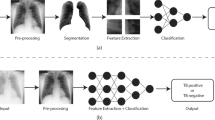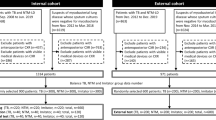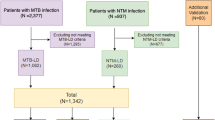Abstract
Pulmonary tuberculosis (PTB) is a contagious disease that affects the lung region. PTB is a life-threatening disease if it is detected late or left untreated. To perform the initial screening of PTB, the World Health Organization has recommended chest radiograph. Till now, the screening process requires either the patients to come to secondary health centers from rural areas or the radiologists to go the remote locations. This process is rejuvenated with the introduction of computer-aided diagnosis (CAD) systems. CAD systems reduce the need for expert radiologists in the screening process. However, the development and deployment are still in the early phases as new methods are being developed to improve the performance of CAD systems in terms of accuracy, specificity and sensitivity. In this study, a deep learning-based PTB classification system has been presented that achieves the state-of-the-art performance for TB classification. Firstly, a proposed architecture based on the blocks is presented and then it is used to create an ensemble. In the proposed ensemble, two standard architectures namely AlexNet, and ResNet have also been used in addition to the proposed architecture. All the architectures are trained and evaluated on a combined dataset formed using publicly available standard datasets. The proposed ensemble attains the accuracy of 90.00% and area under the curve equal to 0.96, which is better than the performance of the existing methods.










Similar content being viewed by others
References
Arzhaeva, Y., Hogeweg, L., de Jong, P., Viergever, M., & van Ginneken, B. (2009). Global and local multi-valued dissimilarity-based classification: Application to computer-aided detection of tuberculosis. In Medical image computing and computer-assisted intervention-MICCAI (pp. 724–731).
Cao, Y., Liu, C., Liu, B., Brunette, M. J., Zhang, N., Sun, T., Zhang, P., Peinado, J., Garavito, E. S., & Garcia, L. L., et al. (2016). Improving tuberculosis diagnostics using deep learning and mobile health technologies among resource-poor and marginalized communities. In 2016 IEEE first international conference on connected health: Applications, systems and engineering technologies (CHASE) (pp. 274–281).
He, K., Zhang, X., Ren, S., & Sun, J. (2015). Deep residual learning for image recognition. arXiv preprint arXiv:1512.03385
Hogeweg, L., Mol, C., de Jong, P. A., Dawson, R., Ayles, H., & van Ginneken, B. (2010). Fusion of local and global detection systems to detect tuberculosis in chest radiographs. In International conference on medical image computing and computer-assisted intervention (pp. 650–657).
Hogeweg, L., Sánchez, C. I., Maduskar, P., Philipsen, R., Story, A., Dawson, R., et al. (2015). Automatic detection of tuberculosis in chest radiographs using a combination of textural, focal, and shape abnormality analysis. IEEE Transactions on Medical Imaging, 34(12), 2429–2442.
Hwang, S., Kim, H. E., Jeong, J., & Kim, H. J. (2016). A novel approach for tuberculosis screening based on deep convolutional neural networks. In SPIE medical imaging (pp. 97,852W–97,852W).
Jaeger, S., Candemir, S., Antani, S., Wang, Y. X., Lu, P. X., & Thoma, G. (2014). Two public chest X-ray datasets for computer-aided screening of pulmonary diseases. Quant Imaging Med Surg, 4(6), 475–477.
Jaeger, S., Karargyris, A., Antani, S., & Thoma, G. (2012). Detecting tuberculosis in radiographs using combined lung masks. In 2012 Annual international conference of the IEEE engineering in medicine and biology society (pp. 4978–4981).
Jaeger, S., Karargyris, A., Candemir, S., Folio, L., Siegelman, J., Callaghan, F., et al. (2014). Automatic tuberculosis screening using chest radiographs. IEEE Transactions on Medical Imaging, 33(2), 233–245.
Karargyris, A., Siegelman, J., Tzortzis, D., Jaeger, S., Candemir, S., Xue, Z., et al. (2016). Combination of texture and shape features to detect pulmonary abnormalities in digital chest x-rays. International Journal of Computer Assisted Radiology and Surgery, 11(1), 99–106.
Krizhevsky, A., Sutskever, I., & Hinton, G. E. (2012). Imagenet classification with deep convolutional neural networks. In Advances in neural information processing systems (pp. 1097–1105).
Lodwick, G. S., Keats, T. E., & Dorst, J. P. (1963). The coding of roentgen images for computer analysis as applied to lung cancer. Radiology, 81(2), 185–200.
Maduskar, P., Philipsen, R. H., Melendez, J., Scholten, E., Chanda, D., Ayles, H., et al. (2016). Automatic detection of pleural effusion in chest radiographs. Medical Image Analysis, 28, 22–32.
Melendez, J., van Ginneken, B., Maduskar, P., Philipsen, R. H., Ayles, H., & Sánchez, C. I. (2016). On combining multiple-instance learning and active learning for computer-aided detection of tuberculosis. IEEE Transactions on Medical Imaging, 35(4), 1013–1024.
Melendez, J., Sánchez, C., Philipsen, R., Maduskar, P., & van Ginneken, B. (2014). Multiple-instance learning for computer-aided detection of tuberculosis. In SPIE medical imaging (pp. 90,351J–90,351J).
Organization, W. H., et al. (2018). Global tuberculosis report 2018.
Pai, M., & Schito, M. (2015). Tuberculosis diagnostics in 2015: Landscape, priorities, needs, and prospects. The Journal of Infectious Diseases, 211(suppl2), S21–S28.
Shen, R., Cheng, I., & Basu, A. (2010). A hybrid knowledge-guided detection technique for screening of infectious pulmonary tuberculosis from chest radiographs. IEEE Transactions on Biomedical Engineering, 57(11), 2646–2656.
Shiraishi, J., Katsuragawa, S., Ikezoe, J., Matsumoto, T., Kobayashi, T., Komatsu, K., et al. (2000). Development of a digital image database for chest radiographs with and without a lung nodule: receiver operating characteristic analysis of radiologists’ detection of pulmonary nodules. AJR American Journal of Roentgenology, 174(1), 71–74.
Tan, J. H., Acharya, U. R., Tan, C., Abraham, K. T., & Lim, C. M. (2012). Computer-assisted diagnosis of tuberculosis: A first order statistical approach to chest radiograph. Journal of Medical Systems, 36(5), 2751–2759.
van Ginneken, B., Katsuragawa, S., ter Haar Romeny, B. M., Doi, K., & Viergever, M. A. (2002). Automatic detection of abnormalities in chest radiographs using local texture analysis. IEEE Transactions on Medical Imaging, 21(2), 139–149.
Xu, T., Cheng, I., Long, R., & Mandal, M. (2013). Novel coarse-to-fine dual scale technique for tuberculosis cavity detection in chest radiographs. EURASIP Journal on Image and Video Processing, 2013(1), 1.
Author information
Authors and Affiliations
Corresponding author
Additional information
Publisher's Note
Springer Nature remains neutral with regard to jurisdictional claims in published maps and institutional affiliations.
Rights and permissions
About this article
Cite this article
Hooda, R., Mittal, A. & Sofat, S. A Novel Ensemble Method for PTB Classification in CXRs. Wireless Pers Commun 112, 809–826 (2020). https://doi.org/10.1007/s11277-020-07075-x
Published:
Issue Date:
DOI: https://doi.org/10.1007/s11277-020-07075-x




